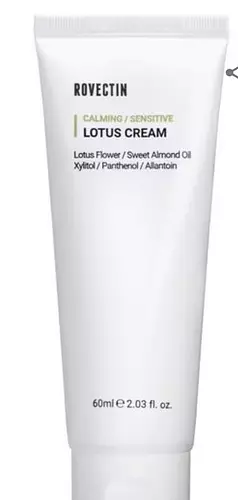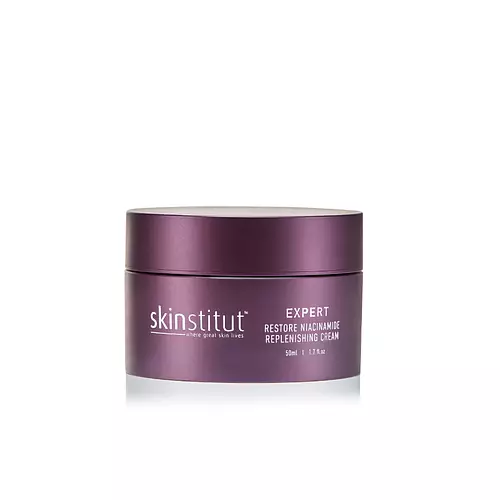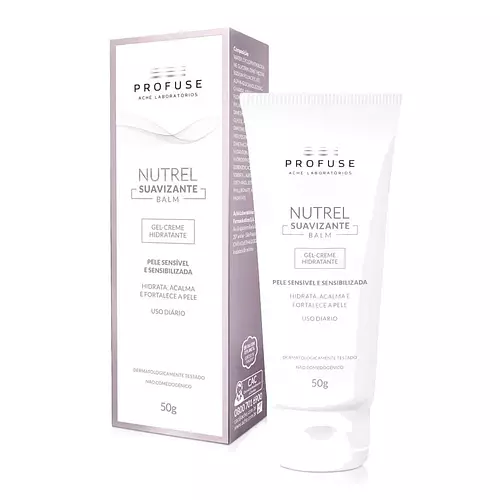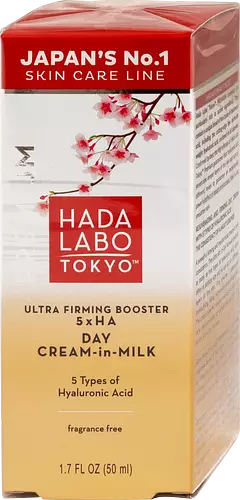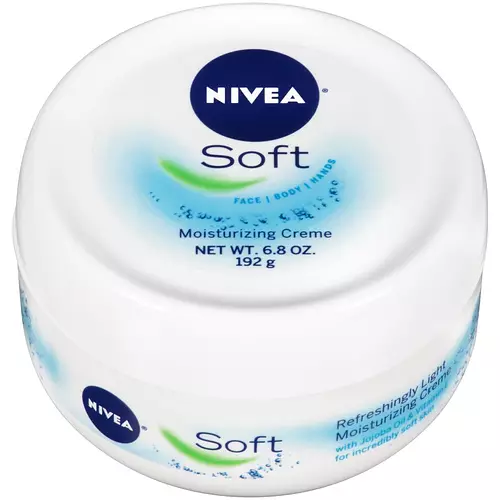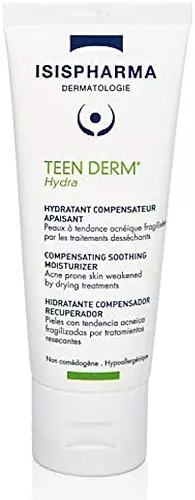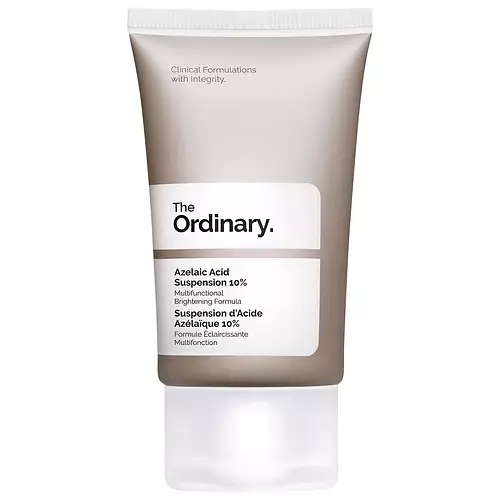Updated on June 03, 2024
Overview
What they are
These products are both reef safe general moisturizers. They have a total of 3 ingredients in common
Cool Features
They both contain ceramides
Suited For
They're both likely to be good for anti aging, dry skin, brightening skin, sensitive skin and scar healing
Free From
They both do not contain any harsh alcohols, common allergens, fragrances or parabens
We independently verify ingredients, and our claims are backed by peer-reviewed research. Spot a product that needs an update? Let us know.
Ingredient Info
Rovectin Calming Sensitive Lotus Cream 24 ingredients
CeraVe Moisturizing Cream 24 ingredients
At a glance
Click on any of the items below to learn more
Rovectin Calming Sensitive Lotus Cream 24 ingredients
CeraVe Moisturizing Cream 24 ingredients
Notable Ingredients
This product contains 1 ingredient that may have this attribute:
This product contains 1 ingredient that may have this attribute:
Benefits
This product contains 2 ingredients that may have this attribute:
This product contains 1 ingredient that may have this attribute:
This product contains 3 ingredients that may have this attribute:
This product contains 3 ingredients that may have this attribute:
This product contains 1 ingredient that may have this attribute:
This product contains 1 ingredient that may have this attribute:
This product contains 1 ingredient that may have this attribute:
This product contains 1 ingredient that may have this attribute:
This product contains 1 ingredient that may have this attribute:
This product contains 2 ingredients that may have this attribute:
Notable Ingredients
This product contains 1 ingredient that may have this attribute:
This product contains 3 ingredients that may have this attribute:
This product contains 1 ingredient that may have this attribute:
Benefits
This product contains 6 ingredients that may have this attribute:
This product contains 4 ingredients that may have this attribute:
This product contains 3 ingredients that may have this attribute:
This product contains 4 ingredients that may have this attribute:
This product contains 1 ingredient that may have this attribute:
This product contains 2 ingredients that may have this attribute:
Concerns
This product contains 3 ingredients that may have this attribute:
This product contains 1 ingredient that may have this attribute:
This product contains 1 ingredient that may have this attribute:
Ingredients Side-by-side
Ingredients Explained
These ingredients are found in both products.
Ingredients higher up in an ingredient list are typically present in a larger amount.
Glycerin is already naturally found in your skin. It helps moisturize and protect your skin.
A study from 2016 found glycerin to be more effective as a humectant than AHAs and hyaluronic acid.
As a humectant, it helps the skin stay hydrated by pulling moisture to your skin. The low molecular weight of glycerin allows it to pull moisture into the deeper layers of your skin.
Hydrated skin improves your skin barrier; Your skin barrier helps protect against irritants and bacteria.
Glycerin has also been found to have antimicrobial and antiviral properties. Due to these properties, glycerin is often used in wound and burn treatments.
In cosmetics, glycerin is usually derived from plants such as soybean or palm. However, it can also be sourced from animals, such as tallow or animal fat.
This ingredient is organic, colorless, odorless, and non-toxic.
Glycerin is the name for this ingredient in American English. British English uses Glycerol/Glycerine.
Learn more about GlycerinCeramide AP is a type of Ceramide.
Ceramides are intercellular lipids naturally found in our skin that bonds dead skin cells together to create a barrier. Having a strong skin barrier leads to more firm and hydrated skin.
They are known for their ability to hold water and thus are a great ingredient for dry skin. By bolstering the skin ceramides act as a barrier against irritating ingredients. This can help with inflammation as well.
If you would like to eat ceramides, sweet potatoes contain a small amount.
Read more about other common types of ceramides here: Ceramide NP Ceramide EOP
Learn more about Ceramide APWater. It's the most common cosmetic ingredient of all. You'll usually see it at the top of ingredient lists, meaning that it makes up the largest part of the product.
So why is it so popular? Water most often acts as a solvent - this means that it helps dissolve other ingredients into the formulation.
You'll also recognize water as that liquid we all need to stay alive. Talk about multi-purpose! If you see this, drink a glass of water. Stay hydrated!
Learn more about WaterIngredient Ratings
Here's what our community thinks of the ingredients in these two products.
When to use
Rovectin Calming Sensitive Lotus Cream 24 ingredients
CeraVe Moisturizing Cream 24 ingredients


Reviews
Here's what our community thinks
Rovectin Calming Sensitive Lotus Cream 24 ingredients
sword
A Bit Comedogenic
I really wanted to like this cream, but it unfortunately clogged my pores a bit. I wanted to try it because lotus has calming and...
A Bit Comedogenic
I really wanted to like this cream, but it unfortunately clogged my pores a bit. I wanted to try it because lotus has calming and anti-inflammatory properties, and this cream was said to be light and suited for oily skin. It definitely has a nice texture and is effective at moisturizing, but I didn't notice any special calming or anti-inflammatory properties. Unfortunately, withing a few days and nights of using it, I started to have skin texture issues as well as whiteheads. I've stopped using it and my skin has returned to normal. The culprit ingredient is the prunus amygdalus dulcis oil.
marianagaleas_409
Beautiful finish, lightweight but still moisturizing and hydrating enough for dry skin. I feel like it has helped brighten my complexion. i love...
Beautiful finish, lightweight but still moisturizing and hydrating enough for dry skin. I feel like it has helped brighten my complexion. i love that it has a little tack since 1. its doesn’t feel like its sliding off my face in the humidity and stays all day and 2. it works great as a primer for makeup to stick to and last all day
CeraVe Moisturizing Cream 24 ingredients
AshN.
As a person with really dry skin, this is a wonderful product that keeps my face hydrated throughout the evenings and great for sensitive skin....
As a person with really dry skin, this is a wonderful product that keeps my face hydrated throughout the evenings and great for sensitive skin. Considering that it is a thick product, a little goes a long way, which is why I think for the amount you get at the price point it is a great buy. Only thing I wish it had was a pump like the Vanicream Moisturizing Cream just because I feel it is more sanitary, but that can be remedied with getting an airless pump dispenser if you don't mind decanting product.
kyniwi
It burns if I have any dry patches (under my nose in the winter for example) and does not sink in very well. I’m pretty sure this has been causing...
It burns if I have any dry patches (under my nose in the winter for example) and does not sink in very well. I’m pretty sure this has been causing me to have blackheads, whiteheads, and milia all over my cheeks and chin. seriously overhyped.
